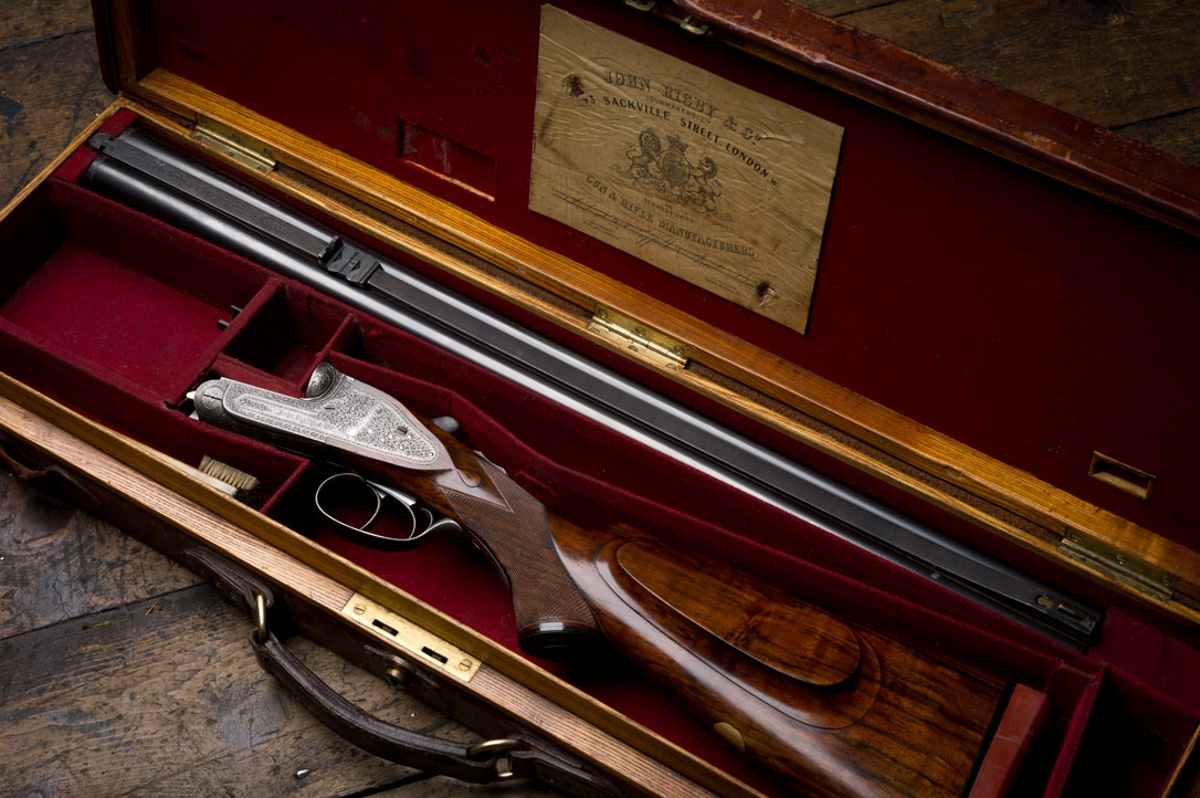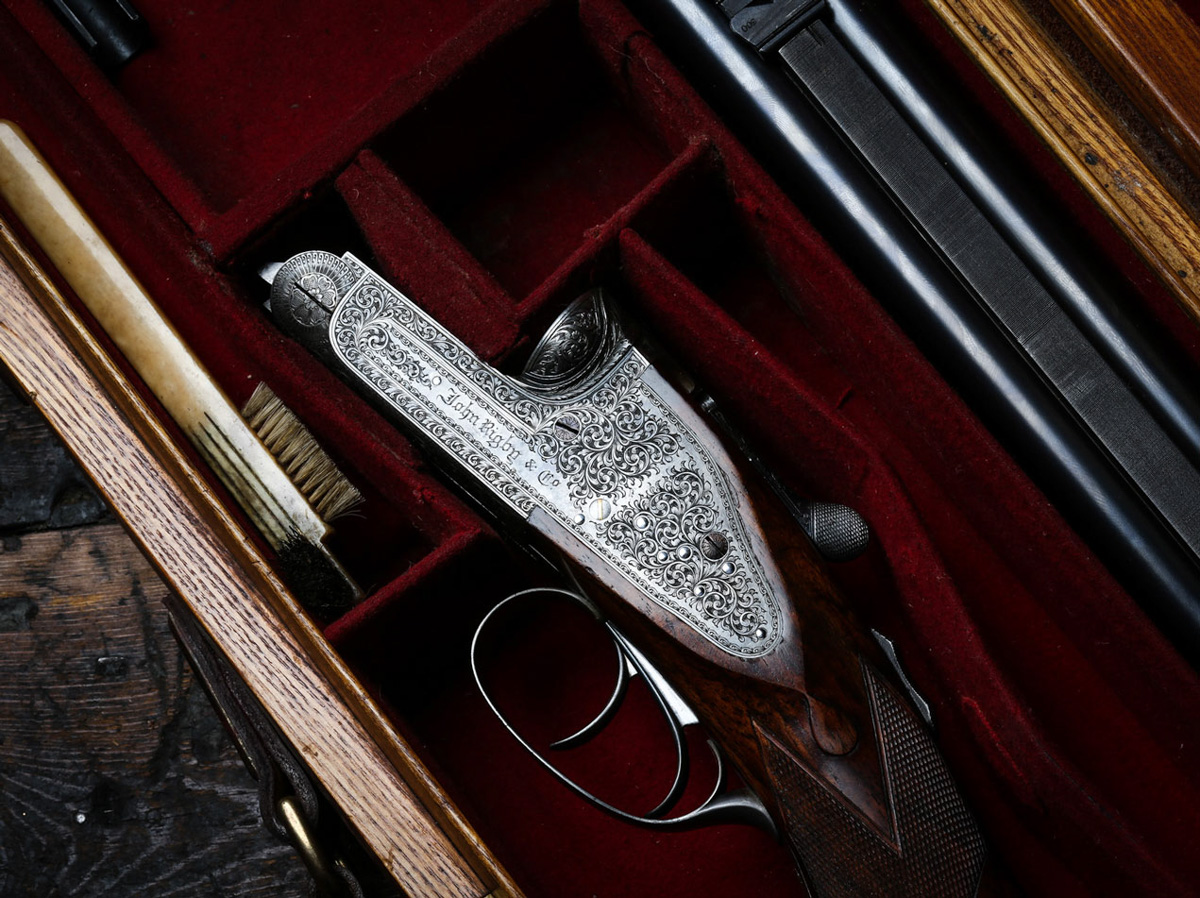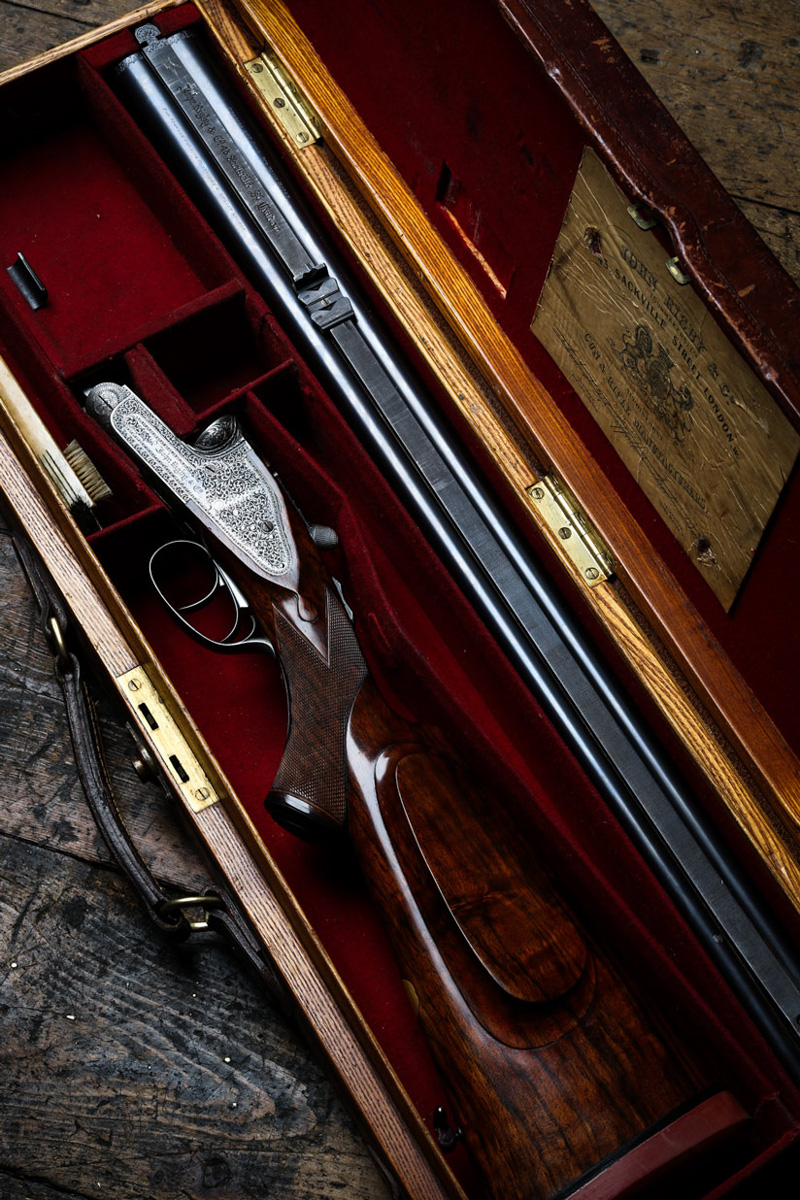When we were active buying rifles in India between 1965 and 1995 the product we brought out all had a common feature, it was in an original unmolested condition. Some had been maintained well, and some not so well, but none had been messed about with by amateur or incompetent gunsmiths. We were able to bring the guns and rifles back to the factory to restore and revive in a subjective and considered manner, to make the gun look its best but not 'over restored'. We felt any restoration work we did should not be noticeable.
One of the rifles I recall buying in India was an excellent J. Rigby .470 sidelock, I was eager to get it back to England for sale but had to endure the 6-8 month export process. The rifle had colour, condition, a long and good looking stock, it even had its case. A quick sale was a foregone conclusion as these rifles were and remain, a rare find.
When the rifle did finally arrive I had it taken immediately onto the range to test shoot in the safe hands of Ken Halbert. Ken our foreman was regulating our rifles at the time. To my horror the stock snapped in half on the first shot, we were (stupidly in hindsight) using some new shooting assist device which was thrown angrily in the bin immediately after the shot. In a millisecond my perfect vintage rifle joined the 'restocked and refinished category gun'.
Last week I was sent some photographs of another J Rigby .470 sidelock, it was in a tatty oak and leather case with a missing lock and rudimentary canvas cover. The rifle had an old squashed recoil pad, overall the look of a rifle discovered in a small armoury in India. It looked to me as if transported in time from just before we pulled the trigger that last time many years ago!
I now have another chance and another great rifle to offer shortly, no shooting contraptions this time, just a steady standing shot. This is obviously a rifle that came in from India years ago and had no work done on it ever, this for us, is the perfect place to start from.
For those Rigby 'rising bite' fanatics I will state now that the rifle I have is not that model rifle, it is a late 1920's vintage rifle and utilises (IMHO) the much better and stronger dolls head type fastening system the company turned to with the advent of nitro powders.





















Neil McVeigh on July 11, 2016 at 6:09 am
Simon you say the dolls head extension is stronger than the "rising bite" but why?
Simon Clode on July 11, 2016 at 4:09 pm
The design! I am no engineer but I do happen to have a dedicated engineering business! So I will try and explain in another post as it would need illustration to show exactly what is doing what in each case.
Also it is interesting to note that in gunmaking good design is kept and maintained by brands into the future. Our dolls head is an example, Purdey self opening action another, Holland assisted opener, Southgate ejectors, many things which work and work well, all are kept.
I have always believed the rising bite rifle to be very nice but it was dropped, the gunmakers were very good at the time, there would have been a reason and that would have been in the proofing of the rifle with the nitro loads when introduced.
The proofing of rifles is another interesting topic. For many years the London and Birmingham proof houses have had different approaches to rifle proof. We are now on a level playing field and London makers are as a result encountering many problems!
James Grinyer on July 14, 2016 at 4:10 pm
Indeed ! I recall questioning why a 'Scottish! .470 double had been proved at a different pressure to our Birmingham proof.... Incurring a certain amount of consternation at the time. The resulting answer was one proof test used base pressure of the fired cartridge and another method ( proof house ) used side wall pressure. Proof is / should be a 'standard' test. It is afterall a 'Crown' proof, regulated by parliamentary law.... As for the 'Rising Bite', Mr Bissell invented a good system, and as with many really good gunmaking designs perhaps it was probably not 'economical' to manufacture??? Sorry if that's a little 'Devils advocate'???!!!
Simon Clode on July 14, 2016 at 4:47 pm
I personally don't believe the cost was a factor. It is perhaps more time consuming yes, but not by a huge amount once tooled up for the job.